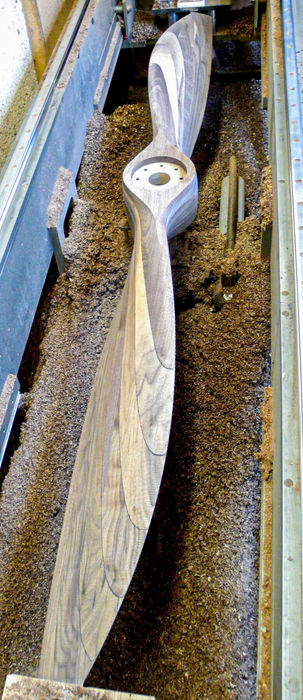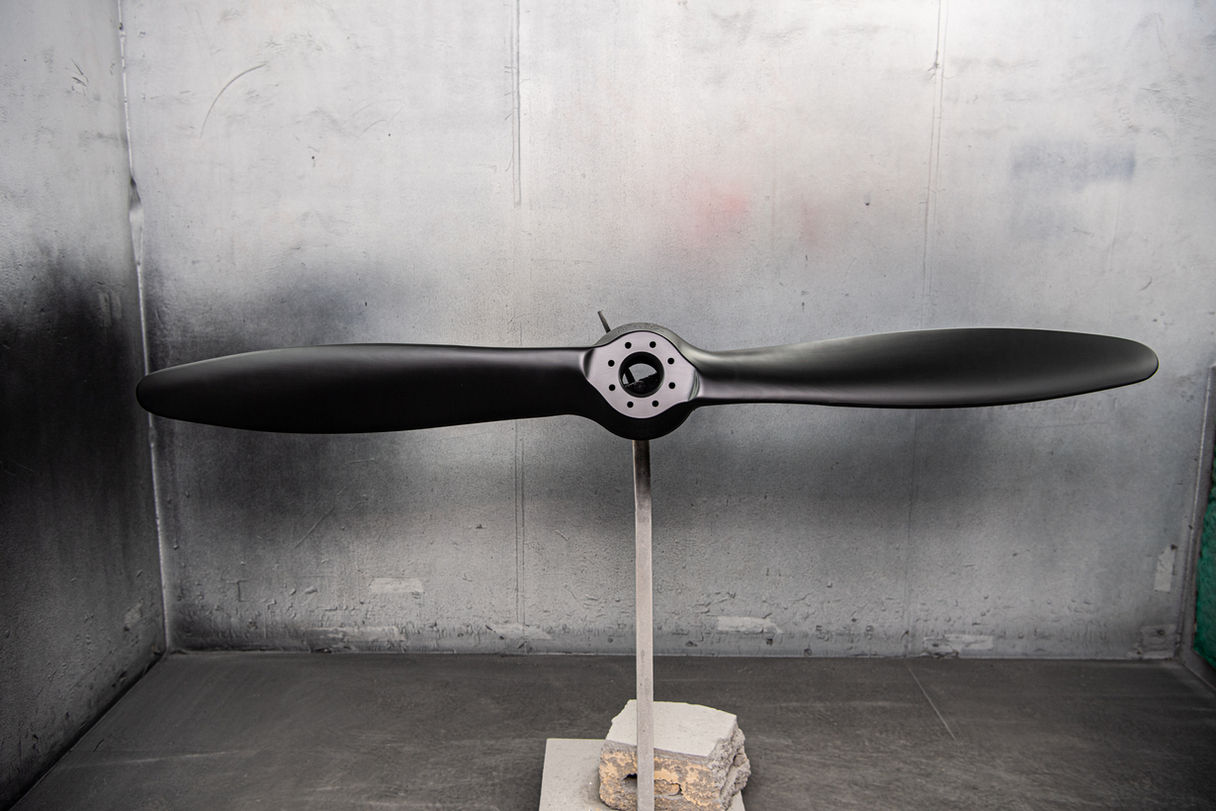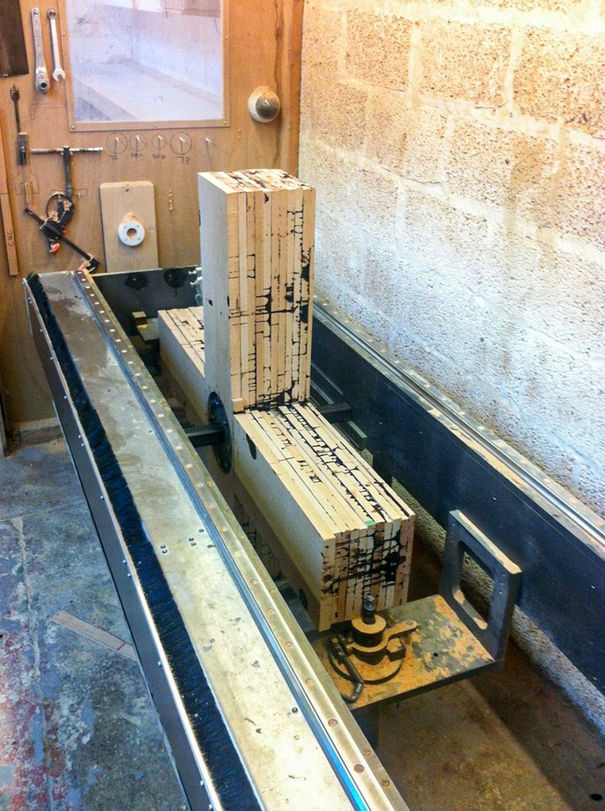CNC machining
and hand crafting
Here at hercules we are huge advocates of using high technology to produce the most consistent, reliable and efficient results in our production processes.
To that end we use an in-house designed and built computer numerically controlled (CNC) machine to sculpt our propellers from their laminated wood blanks, before handing them over for the final hand-crafted finishing work. The CNC machine uses the 3d computer models created as part of our design process to run several stages:
Cutting the slot for our hercuthane leading edges
Drilling the centre bore, bolt holes and drive bushes
Initial roughing cut – the mesmerising part of the process where the propeller miraculously appears out of the wood
Finishing cut – taking the propeller down to its final shape
Aerodynamic design output

Laminated blanks
Every Hercules aircraft propeller starts its life as rough sawn grade a timber. From initial delivery our wood is carefully examined, tested sorted and stored ready for selection.
The wood boards are chosen individually for each propeller, initially by size. They are then cut to very exact lengths, widths and thicknesses depending on the requirement – the majority of our propellers are made up of laminates of 4, 5 or sometimes 6 layers.
Once the boards are cut to size, they’re sorted according to grain direction and stacked in order.
Glue is spread evenly on both sides of each bonded join between boards using a specially calibrated spreader, before the glued faces are then put together.
Once the boards are all glued, the laminate block is then secured under very high pressure in our custom built heated glue press. The blank is then left for the glue to cure for 12 hours.


Hercules wood types
Hercules wood types
Beech, from FSC approved sustainable sources
Honduras mahogany - reclaimed wood, sometimes even old church pews as the import is banned for environmental reasons
American black walnut from FSC approved sustainable sustainable sources
Hydulignum - densified engineered wood for our Spitfire propeller blades, identical to the original blades
Leading edge protection
Hercules use our unique Hercuthane polyurethane leading edge protection system which is precisely bonded into the laminated blank and machined as an integral part of the propeller.
Hercuthane leading edges are proven to be bulletproof and are impervious to stones and rocks on the ground and rain when in flight.
Precision balancing & finishing
Each and every propeller that passes through the Hercules factory is precision balanced throughout the manufacturing or refurbishment process, with a final tuning happening as the final process.
We take great pride in also providing every propeller with the highest quality finish, either clear varnish or paint.
Our propellers are tracked and balanced on a 360 degree rotational balancer, meaning the propeller is balanced for every point throughout its full circle of rotation, making it exceptionally smooth running.


4. The CNC finishing cut creates the precise aerofoils, leaving a subtly texture finish
5. The propeller comes out of the machine and is sanded by hand to perfectly smooth the wood
6. The propeller is complete after the final finish (varnish or paint and lacquer) is sprayed and polished
1. Hercuthane leading edges are bonded into the blank
2. The holes and drive bushes are drilled by the CNC machine
3. The CNC machine runs a roughing cut which produces the basic propeller shape

Inside Our Factory
CLICK TO ENLARGE
PROPELLER MANUFACTURING

Custom anodised aluminium crush plates
Offered as a finishing ‘accessory’, we produce custom machined anodised aluminium crush plates that can be used to beautifully complete a propeller on an aircraft that doesn’t use a spinner as a stand-alone ‘bolt-on’ installation.
We also recommend using a new crush plate as so often plates that have been used and over tightened in the past can be distorted, warped or have become damaged imperceptibly, leading to damage being caused to a brand new propeller at installation.

























